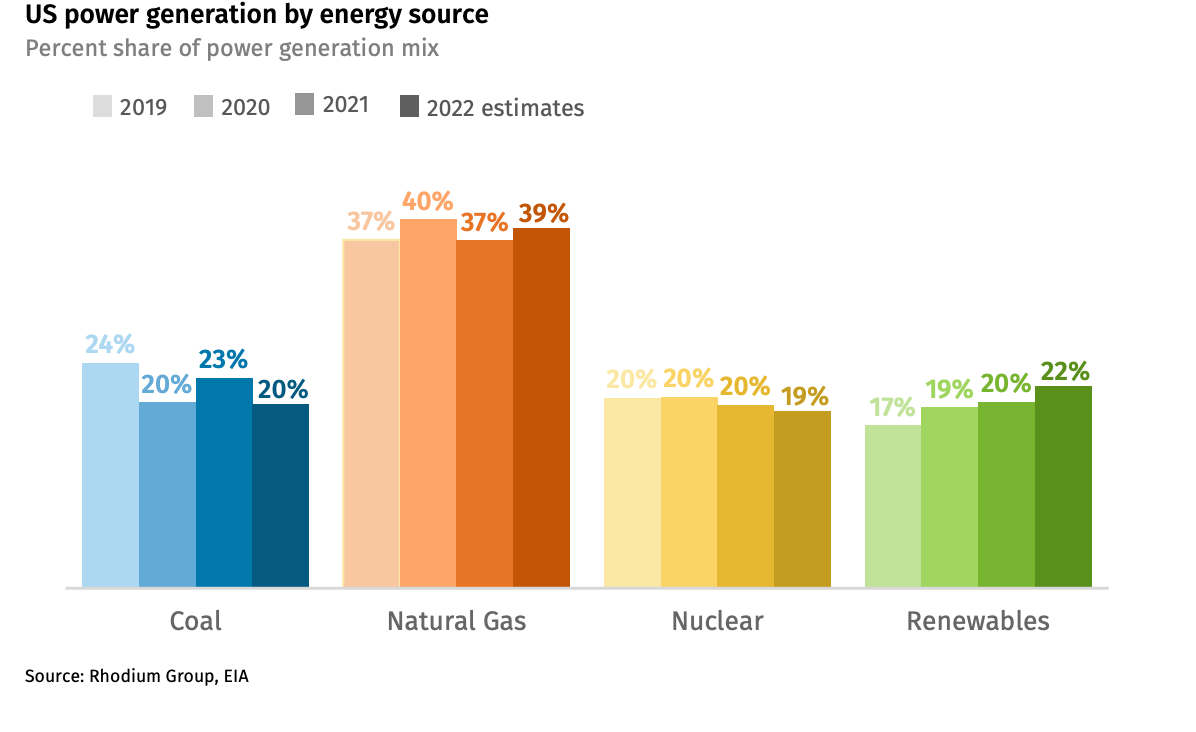Are fossil fuels losing their grip on US? ‘Carbon intensity’ of economy lags as renewables grow
While the country’s carbon footprint increased slightly by 1.3 per cent - far less steeply than it did in 2021, and well below pre-pandemic levels
Your support helps us to tell the story
From reproductive rights to climate change to Big Tech, The Independent is on the ground when the story is developing. Whether it's investigating the financials of Elon Musk's pro-Trump PAC or producing our latest documentary, 'The A Word', which shines a light on the American women fighting for reproductive rights, we know how important it is to parse out the facts from the messaging.
At such a critical moment in US history, we need reporters on the ground. Your donation allows us to keep sending journalists to speak to both sides of the story.
The Independent is trusted by Americans across the entire political spectrum. And unlike many other quality news outlets, we choose not to lock Americans out of our reporting and analysis with paywalls. We believe quality journalism should be available to everyone, paid for by those who can afford it.
Your support makes all the difference.There are signs that fossil fuel use is waning in the US as carbon emissions dropped behind the rate of economic growth in 2022.
The country’s carbon footprint still increased by 1.3 per cent - but far less steeply than it did in 2021, and well below pre-pandemic levels.
The carbon intensity of the US economy also declined in 2022 thanks to major shifts in the electric power sector which accounts for 28 per cent of overall emissions. However, the economy had a sluggish year due to high inflation, disrupted global supply chains, and fallout from the war in Ukraine. The US economy grew 1.9 per cent last year, down from 5.7 per cent in 2021.
This reversal in 2022 was due to a significant jump in renewables - rising 12 per cent on the previous year - and the replacement of coal power with less carbon-intensive natural gas.
The preliminary findings were published on Tuesday by the Rhodium Group which analyses disruptive global trends.
For the first time in six decades, renewable energy surpassed coal in the US, generating 22 per cent of total electric power compared to coal’s 20 per cent. (Prior to the 1960s, hydropower was bigger than coal generation.) The decline in coal was due to the retirement of coal-fired generators and disruptions to the railroads that deliver coal to power plants.
In other sectors, emissions increased. The greatest increase was from buildings (6 per cent) - the only sector to rebound to pre-Covid levels - largely due to increased heating in homes amid extremely cold winter temperatures from the bomb cyclone which barrelled across the country in late December.
There was also smaller upticks in industry and transport sectors - which together account for two-thirds of US emissions.
Industrial production was affected by supply chain problems and rising oil prices, leading to higher production and shipping costs, Rhodium explained. The slight emissions increase in the transport sector was driven by the demand for jet fuel as air travel increased from 2021.

And while the US is still lagging behind its Paris Agreement-aligned 2030 goal of reducing emissions by 50-52 per cent (from 2005 levels), there were reasons to be optimistic, analysts noted.
The recently-passed Inflation Reducton Act - the most significant legislation to tackle climate change in US history - may help cut emissions this year, if the US government can get moving quickly enough. However, a deeply divided US Congress puts this possibility in serious jeopardy.
The report calls for more aggressive government regulations in 2023 to drive down emissions.
“These actions, together with additional policies from leading states as well as action from private actors, can put the target within reach—but all parties must act quickly,” it concluded.




Join our commenting forum
Join thought-provoking conversations, follow other Independent readers and see their replies
0Comments